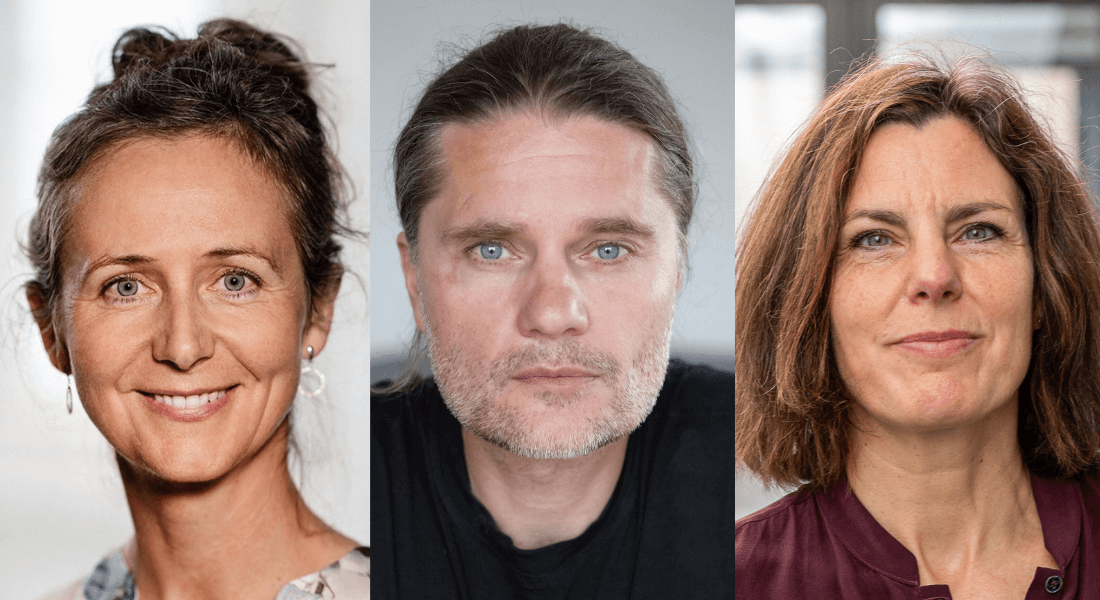SUND receives DKK 15M for sustainable development research in the Arctic
Three SUND research projects receive funding from DFF to strengthen sustainable development in the Arctic through a greater understanding of climate change and its impact on biodiversity, ecosystems, cultural heritage, and living conditions.

Eline Lorenzen and Anders Johannes Hansen, both at the Globe Institute, and Charlotte Reinhard Bjørnvad at the Department of Veterinary Clinical Sciences receive DKK 6.2 million, DKK 3.2 million and DKK 6.1 million respectively for their research in sustainable development in the Arctic. One study will map the demographic changes each narwhal population has undergone since 2000, while the other will explore the genomes of Southwest Greenlandic sled dogs for adaptations that can shed light on their interaction with the Thule Inuit and how the dogs have been used in that region and time period. The third project wants to find environmentally, economically and socially sustainable solutions for feeding the sled dogs in Greenland
These three SUND projects, along with seven other research ideas, receive support from the Independent Research Fund Denmark (DFF). All applicants have been evaluated by the fund’s thematic committee, DFF | Thematic Research – Arctic Research – Climate Change and Sustainable Arctic Communities.
Sustainability in Greenland and the Arctic
Together, they aim to answer questions such as: How can we support the sustainable preservation and management of reindeer in Greenland? How have past climate changes affected the Greenlandic ice sheet and the surrounding marine environments? How can we ensure the preservation of iconic Arctic species crucial to food security and economic stability in Arctic communities?
“This is the first time that Independent Research Fund Denmark is directly funding research in the Arctic area, and there has been significant interest with a total of 75 applications. There is a substantial opportunity to build capacity in this research area, which is crucial for understanding climate change and its impacts on those experiencing it most directly, “ says Søren Serritzlew, chair of the board for Independent Research Fund Denmark.
Read about the three SUND projects below:
Eline Lorenzen, Globe Institute, DKK 6,191,958
The Arctic’s marine ecosystems are at a critical juncture due to global temperature changes. Marine mammal populations, which are at the top of the Arctic food chain, are showing signs of change. After a long break due to commercial whaling, bowhead whales are returning to Disko Bay (West Greenland), an area known for high biological productivity. Conversely, the narwhal population in Scoresby Sound (East Greenland), one of the world’s largest fjord systems, is sharply declining. Additionally, beluga whales have appeared along Greenland’s east coast over the past five years, where they were previously absent. This study will map the demographic changes in each population since the year 2000 through genetic analyses of thousands of tissue samples collected annually by the Greenland Institute of Natural Resources. By comparing genetic data year-by-year, we will investigate changes across time in population size, diversity, kinship, and sex ratio. Our findings will provide novel insights into how population changes impact key demographic processes at the top of the Arctic food chain. This project also has significant applied potential, as it will provide essential data for future knowledge-based biodiversity monitoring of marine species in the Arctic.
Anders Johannes Hansen, Globe Institute, DKK 3,163,120
The Greenlandic sled dog has been an integral part of Thule Inuit culture for the past 2000 years and remains a key element of Greenlandic identity. Research by several co-applicants has shown that the sled dog originated in Siberia and accompanied the Inuit on their long journey to Greenland. Genomic studies reveal that sled dogs have different dietary preferences compared to Western European dogs and have been selected for endurance and strength. These adaptations are shaped by their collaboration with the Inuit. Today, sled dogs are found throughout Greenland except in Southwest Greenland. Recent climate changes have shortened the sea ice season, reducing the period for dog sledding and thus the use of sled dogs. This has led to a halving of the sled dog population in Greenland over the past 20 years, making their future uncertain. In Southwest Greenland, sea ice coverage has been unstable for centuries, and we know that sled dogs and Thule Inuit coexisted in this area for over 500 years. During this time, sled dogs and their use adapted to the climatic conditions, making this knowledge crucial for the future of sled dogs in Greenland. We have assembled an international, interdisciplinary team of researchers to explore the genomes of Southwest Greenlandic dogs for adaptations that can shed light on their interaction with the Thule Inuit and how the dogs were used in that region and period.
Charlotte Reinhard Bjørnvad, Department of Veterinary Clinical Sciences, DKK 6,145,078
Management of sled dogs in Greenland differs significantly from that of most pet dog breeds due to traditional and cultural differences, economic considerations and access to appropriate feed. As a consequence of the climatic changes and global warming, the availability of raw materials in the Arctic regions is changing. Increased challenges in the availability of feed and increased costs of keeping sled dogs have contributed to a drastic decline in the sled dog population in Greenland
during the past four decades. However, the Greenland Sled Dog is a unique dog breed with major importance for the identity and culture of the Greenlandic population. The ultimate goal of the GreenFeed project is to find environmentally, economically and socially sustainable solutions for feeding the sled dogs in Greenland, in line with Greenlandic traditions and culture, while promoting the dogs health and welfare in a rapidly changing environment.
